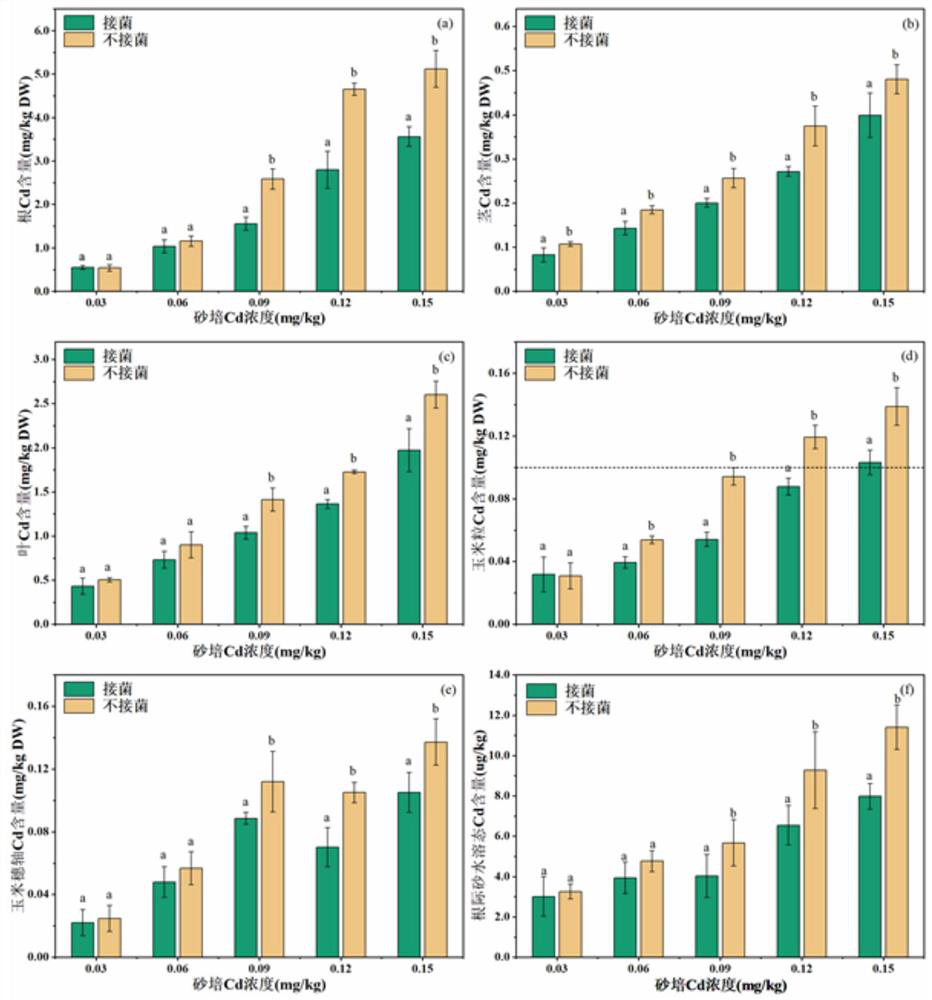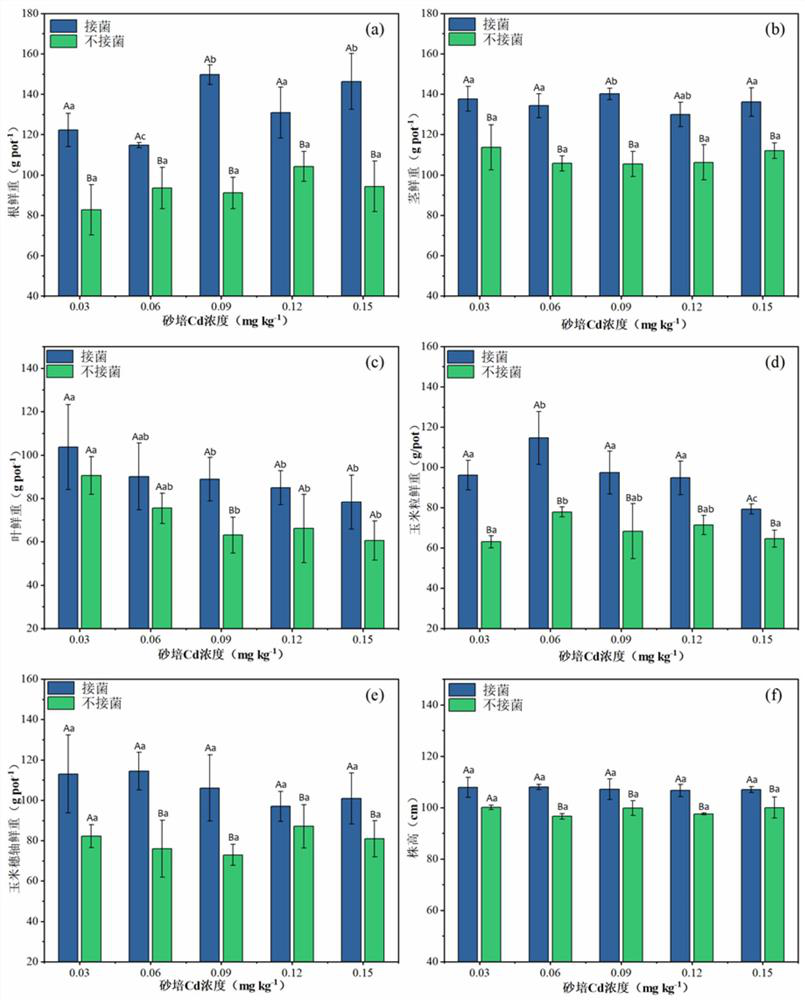Bacillus cereus B-28 and application thereof
A technology of Bacillus cereus and B-28, which is applied in the field of soil pollution biological treatment, can solve the problems of complex colony, many influencing factors, and inability to strictly control experimental conditions, etc., to reduce Cd absorption, promote growth, and reduce Cd biological Effectiveness
- Summary
- Abstract
- Description
- Claims
- Application Information
AI Technical Summary
Problems solved by technology
Method used
Image
Examples
Embodiment 1
[0036] The adsorption effect of embodiment 1 bacillus cereus B-28 to water-soluble state Cd
[0037] 1. Experimental method
[0038]Inoculate Bacillus cereus B-28 in LB medium and cultivate overnight, centrifuge at 6000rpm for 10min, discard the supernatant, then wash the bacteria twice with sterile water, and finally resuspend in sterile water to obtain a spare bacterial solution. Then inoculate 0.5 mL of bacterial liquid into 100 mL of LB medium containing 1 mg / L Cd (added in the form of Cd(NO3) 2 ), and inoculate into LB medium without Cd as a control, and each treatment has three parallels. Place in a shaker at 180rpm and culture at 30°C. On the 1st, 3rd, 5th, and 7th days of bacterial strain culture, samples were taken once to measure the OD of the bacterial liquid 600 Value and pH value, then the bacterial solution was centrifuged at 6000rpm for 10min to obtain bacterial pellet. The harvested cells were washed twice with sterile water, and then 20 mL of 10 mM EDTA sol...
Embodiment 2
[0042] Example 2 Effect of inoculation of Bacillus cereus B-28 on corn absorption of Cd
[0043] 1. Experimental method
[0044] In this study, through sand culture experiments, five different Cd concentrations were set to explore the effects of Bacillus cereus B-28 on the growth and cadmium absorption of maize. A total of 10 treatments were used in the experiment, which were: 0.03J (the concentration of Cd added to the potted plant was 0.03mg / kg quartz sand, the same as the following; inoculation), 0.06J (the concentration of Cd was 0.06mg / kg, inoculation), 0.09J (Cd Concentration 0.09mmg / kg, inoculation), 0.12J (Cd concentration 0.12mg / kg, inoculation), 0.15J (Cd concentration 0.15mg / kg, inoculation) and 5 non-inoculation controls of each Cd concentration: 0.03 CK, 0.06CK, 0.09CK, 0.12CK, and 0.15CK. There were 4 parallels for each treatment, a total of 40 pots, and each pot contained 4kg of quartz sand.
[0045] Corn seeds were treated with 10% H before use 2 o 2 Disin...
Embodiment 3
[0049] The direct impact of embodiment 3 inoculating Bacillus cereus B-28 on the growth of corn
[0050] 1. Experimental method
[0051] The corn was harvested after 100 days of growth. When harvesting, first measure the height of the corn plant, shake the corn root to wash, thereby separating the rhizosphere sand, wash it with deionized water and dissolve it in 0.5mM CaCl 2 Soak in water for 0.5h to remove the Cd attached to the corn root surface, and wipe the surface with absorbent paper to remove the water attached to the root surface. The corn tissue was divided into roots, stems, leaves, corn kernels and corn cobs, and the fresh weights were weighed separately, and the fresh samples of each reserved part were immediately quenched with liquid nitrogen and stored in a -80°C refrigerator (Haier DW-86L626). For the determination of enzyme activity and chlorophyll, the remaining tissue samples were put into envelopes and placed in a constant temperature oven at 105°C for 0.5...
PUM
 Login to View More
Login to View More Abstract
Description
Claims
Application Information
 Login to View More
Login to View More - R&D
- Intellectual Property
- Life Sciences
- Materials
- Tech Scout
- Unparalleled Data Quality
- Higher Quality Content
- 60% Fewer Hallucinations
Browse by: Latest US Patents, China's latest patents, Technical Efficacy Thesaurus, Application Domain, Technology Topic, Popular Technical Reports.
© 2025 PatSnap. All rights reserved.Legal|Privacy policy|Modern Slavery Act Transparency Statement|Sitemap|About US| Contact US: help@patsnap.com



